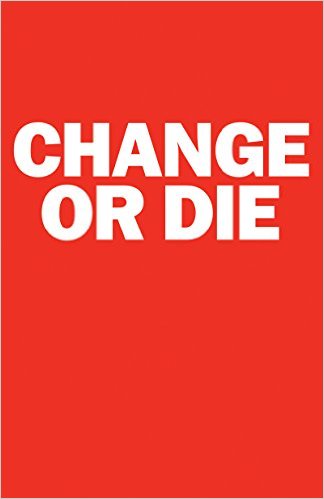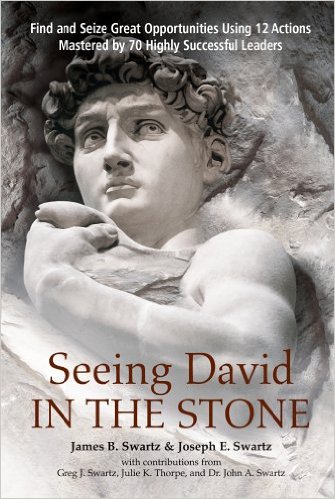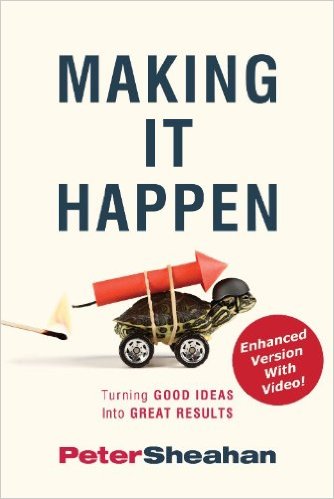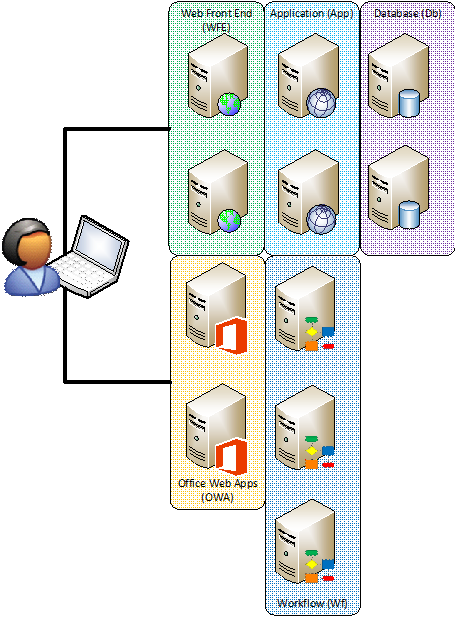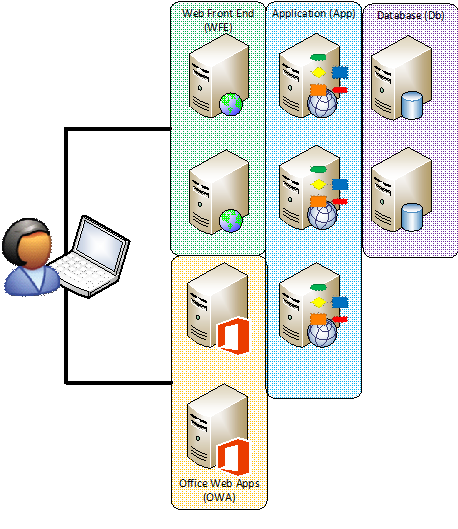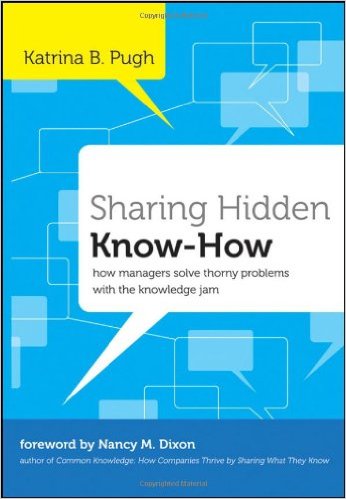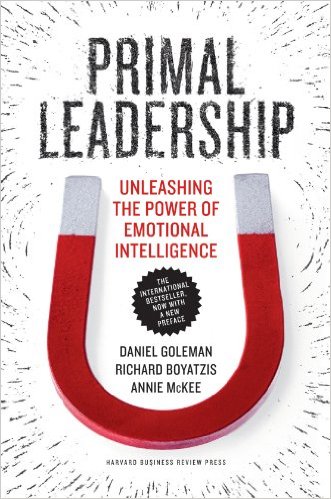Book Review-Creativity: Flow and the Psychology of Discovery and Innovation
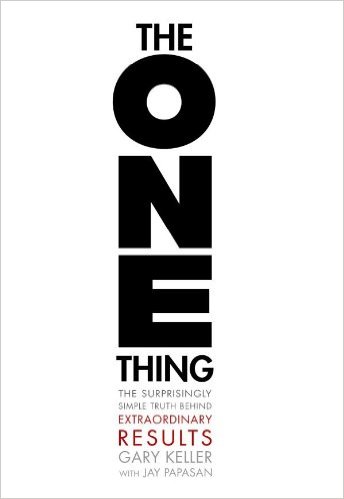
Book Review-The ONE Thing
What if you could do just one thing really well? What is if you could focus all of your energies into one thing and become the best in the world at it? This is the question that’s at the heart of The ONE Thing: The Surprisingly Simple Truth behind Extraordinary Results. Of course, we’d all love to master one thing but how would we even go about doing that? Gary Keller seeks to convince you that you should focus on only ONE thing and get it right, rather than flitting through your day dealing with whatever urgent thing happens to come up.
Finding the One Thing
I have only two real criticisms of The ONE Thing. First, the book isn’t good at all about helping you find what your ONE Thing should be. It speaks well about the need to focus down on doing one thing well but it’s not effective at a plan for how to find that one thing.
Other books have spoken of focus and the Stockdale paradox – “You must maintain unwavering faith that you can and will prevail in the end, regardless of the difficulties, AND at the same time have the discipline to confront the most brutal facts of your current reality, whatever they might be.” (Particularly Good to Great.) However, the question isn’t have there been successful people who have stuck to their guns and adapted – like FedEx – but for me the question is how many more people stuck to their guns for the wrong idea? It wasn’t their faith that was bad but rather their perception of what the market wanted and needed.
So while the inspirational stories of success are great, I question whether it’s possible that finding the ONE thing is just as important as the ONE thing itself.
Second, I know that the book is sensationalized and oversimplified in places. It references the right research and quotes the right people, however, it rather frequently over simplifies things to the point of making it unclear how to actually implement success. The most direct way to see this is by comparing it with the book Making it Happen. Peter Sheahan speaks about five phases which are: Packaging, Positioning, Influence, Acceleration, and Reinvention. In this, he leverages the analogy of a cutting torch and how a small blue flame is much more effective than a big yellow flame. Sheahan also talks about the need to expand your offerings once you’re on the other side. I believe that this is a more comprehensive view of focus – there are times to focus and there are times to diversity. The precision about when the ONE thing is appropriate – and when it isn’t – is sorely missing.
The reality is that what Keller is advocating in The ONE Thing isn’t really one thing at all. He’s advocating ONE thing in each aspect of your life – and that the ONE thing may change over time – which is wise. However, when you expand the ONE thing to each aspect of your life – it loses its focus. Despite the book reminding us about the language of having a singular priority – we become adrift in the priorities for the different areas of our lives.
I know that I might have discouraged you a bit from reading the rest of the review and the book – however, I want you to hang with it – like I did. It’s really a good book that can help you if you feel like you’re not able to be successful despite your best efforts. There are many analogies, breakdowns, and stories that can really drive the point home about how to be successful – if you’ll let it.
Six Lies between You and Success
The ONE Thing asserts that there are six lies between you and success which are:
- Everything Matters Equally – In reality some things matter much more than others. The Pareto rule or the 80/20 principle applies to many things including how important the things that you do are. Some are very powerful and others are virtually irrelevant.
- Multitasking – Some believe that they can do multiple things at the same time, while others realize that this is a fallacy. The argument goes that you can walk and chew gum at the same time so why can’t you listen to music and study at the same time? The answer is that you can only focus on one thing at a time. The only successful multitasking isn’t multitasking at all. It’s allowing different parts of your brain to process different things or task switching. Listening to music is fine as long as the music is used to drown out other sounds that might distract you and the music itself is so familiar that it doesn’t draw your focus. (See Efficiency in Learning for more on the impact of split attention.) Task switching is really about alternating your focus between multiple things. You’re still only doing one thing at a time but you’ve created the appearance that you’re getting more done.
- A Disciplined Life – Some believe that to be successful you must always be disciplined. The mental model of the Elephant, Rider, and Path from Switch and The Happiness Hypothesis dispels this myth. The rational self (rider) – the part of you responsible for discipline – gets tired. You need to change the emotion (elephant) or the habits (path). What you need most isn’t discipline, it’s just enough discipline to establish habits.
- Willpower Is Always on Will-Call – We believe that we can summon up willpower at any time we want it. However, the reality is that we’re often too tired, hungry, or lonely to muster up the willpower we need. The best way to have willpower is to exercise it intentionally and to ensure that it’s well fed.
- A Balanced Life – Our lives are necessarily out of balance. When we’re working we’re not balanced with our family life. When we’re on vacation with our family our work life isn’t in balance. The point is that balance is less of a state and it’s more of an activity.
- Big is bad – We’re often scared of success. We’re scared that if we reach for the big goal that we’ll fail. Sometimes failure with a high goal is better than success with a smaller one.
We’ll dig into a few nuances of these lies and how they prevent us from success.
Dominos, Momentum, and Extraordinary Success
The ONE Thing speaks about dominos and how dominos add up – over time – to be a huge amount of energy. It also shares that a domino can knock over another domino 50% larger than itself allowing for a relatively small number of transitions to create very massive impacts. The ability to create momentum shows up in Good to Great in the concept of the flywheel, small wins in The New Edge in Knowledge, reinforcing loops in The Fifth Discipline and Thinking in Systems. John Maxwell’s language is “The Big Mo” – short for momentum.
Michelangelo was quoted with “If anyone knew how hard and how long I have worked to become what I am today, they would no longer think such great things about me.” I first saw this quote in Seeing David in the Stone. Hard work over a long period of time creates great skill as Gladwell discussed in Outliers. Gary Klein in Sources of Power discussed how fire commanders had become so good at fighting fires they no longer realized they were thinking and evaluating the fire, they just knew that they “felt” like a particular path was the right one to follow.
Extraordinary success doesn’t come from a few attempts. People don’t just become truly talented at something. Mihaly Csikszentmihalyi speaks of people Finding Flow and the impact of it. Flow is the balance of challenge to ability which creates a state of high productivity – one which is its own reward. If someone operates in flow for long periods of time they necessarily become better at what they do. Becoming better at what they do until they are exponentially better at it than others. It seems like someone gets really good at what they do overnight. There’s a time when the Beatles just became a good band. At some level this is true. There was a breakthrough point. However, at another level, it isn’t. They simply did their thousands of hours of practice until their exponential growth carried them into success.
Focusing on the ONE thing allows you to build the experience you need to become exponentially better at something than others.
Purpose, Priority, Productivity, and Profit
It’s entirely possible to be running 1,000 miles per hour in the wrong direction as the Does Anybody Hear Her lyrics say. If you find your ONE thing, how do you know that it’s the right thing? How do you know that it’s the thing that will fulfill you and make you happy? The answer starts with purpose. What is your purpose in life? A secret is that your purpose isn’t to make money any more than a corporation’s is. (See The Advantage for more on corporate purpose.)
Finding your purpose isn’t necessarily an easy thing and more than finding your ONE thing is. However, if you don’t start with your purpose you may find that your ONE Thing may not matter. Imagine an army platoon headed through the forest and the commander asking a scout to climb above the tree line to confirm they’re headed in the right direction and the scout coming back and reporting that they’re in the wrong forest – not only are they going the wrong direction but they’re not even in the right place.
With purpose in place you can focus on priority. Priority is your ONE thing. It’s whatever you’ve decided you need to work on now. From your priority and repeated investment in time and practice you get productivity. Productivity flows from the hours of purposeful practice. (Pun intended) The presumption is that from the productivity comes profit.
Task Switching
Above, in the six lies between you and success section, I discussed how multitasking isn’t possible. We can really only focus on one thing at a time. Computers are the same way – except now they have multiple CPUs and CPU cores so they can literally be doing more than one thing at a time in the same way that a team can. The overhead of switching focus for a computer has evolved over time. Computers have been specifically designed to be able to switch focus rapidly. Humans have been designed to make a limited number of focus shifts and as a result we make them more poorly.
Mihaly Csikszentmihalyi (Finding Flow) talks about flow sometimes taking 15 minutes to get into. If you’re required to focus switch in the middle of flow it can be very difficult to get back to the same level of productivity.
The ONE Thing quotes from Paul Graham’s essay “Maker’s Schedule, Manager’s Schedule” the essence of which is that makers need long blocks of uninterrupted time where managers need small blocks of time. One thing that I’ve learned is that I have to schedule the big things first and fit them into time blocks that they fit in. Then all of the other things that I need to do – the things that need smaller amounts of focused time need to fit around them.
I once saw a demonstration where there were marbles, sand, and water which were to be placed in a jar. If you placed the water in the jar first, filling it to the top, nothing else would fit. If you filled the jar first with marbles you could then fit in some sand again filling the jar to the top. You could even pour some water in over the sand and it too would fit in the jar. The illustration has stuck with me in the years since I saw it because I realized that you have to start filling your time with the big stuff first and let the smaller stuff flow around it.
Practical Lessons for Being Productive
While in general I subscribe to the idea that I should be productive, that I should be focused on doing those things on my list which most closely align with my ONE thing – there are times when I just can’t pull that off. Consider the way that I write these blog posts for instance. That is, if we ignore for a moment that they’re probably not related to my ONE thing but are instead my passion for learning.
There are a set of steps in the writing process. It starts with reading and highlighting the book. Then there’s getting those highlights into OneNote. Then there’s preprocessing the notes which means coding the notes and highlights and preparing myself for writing. The last stage is writing the actual blog post. There are times when I simply can’t read any more. Times when I can’t process my highlights from books, and many more times when I can’t write. So sometimes what is the short term priority to produce isn’t best for long term productivity. I absolutely know that I can “fight it out” and create a blog post even when I’m not “in the mood” for writing. However, I know equally that I learn less from the process, the quality is worse, and for the most part I simply don’t like it. It’s much better to do something I can do productively and return to writing later when I’m more “in tune” with it. It often results in having a few book review blog posts in various states of completion at any one time – but also keeps me productive with them.
I learned that sometimes if I can’t do the one thing that I need to do most, I should look for the next thing that I need to do and keep doing that until I find something that I can do – that I need to do. Obviously this can become very trivial very quickly, but if I’m conscious about what I’m choosing I can do something valuable when I can’t do what is really at the top of my list.
I find an effective activity that I rarely do is cleaning my desk/office. It sounds silly but the act of getting up and doing something sometimes helps me work through whatever state I’m in that prevents me from working effectively on my most important thing. Brain Rules talks about how our brain is spurred on by physical activity.
I’m not trying to minimize the need to work on your ONE thing. Rather I’m suggesting a strategy to stay productive when climbing the mountain of necessary willpower isn’t really an option.
The Power of Focus
There’s no doubt that in focus there is power. Use a magnifying glass to focus the suns ray’s into a small spot and you can start a fire. However, the principle is broader than that. Consider that the light from a lantern can light a handful of yards around the lantern. The same light placed in a lighthouse with a Fresnel lens and a reflector to focus the light along a narrow band along the horizon can be seen for miles. The same energy in the lantern as a laser can be seen for hundreds of miles or maybe even the moon.
Some folks believe that the problem with their lives is that they’re not productive enough. However, it can be that they’re creating the same amount of energy as other more successful people but that the other people who are more successful are just better at focusing and harnessing their energy in one specific direction.
The Four Thieves of Productivity
Some ideas, people, and environments are life giving. They add to your life and your productivity. Other ideas, people, and environments are life taking. They drain you and stand between you and the success you want. Here are four thieves of productivity:
- Inability to say “No” – If you can’t say no to things then you won’t be able to do what you’ve said yes to. It’s a solid principle to think about what you must give up every time you say yes to something. If you’re not willing to give up something else you may not be able to say yes.
- Fear of Chaos – Chaos is scary, unpredictable, and messy but it’s also messy if you want to accomplish something new. Road following doesn’t involve much chaos but road building invariably leads to chaos. As you spend more of your time focused on your ONE thing you invariably have to let other things drop or be paused. Accept that it will be messy and that this is OK.
-
Poor Health Habits – Your health is your engine. If you aren’t healthy how can you possibly be productive? Keller recommends that you:
- Meditate and pray for spiritual energy
- Eat right, exercise, and sleep sufficiently for physical energy
- Hug, kiss, and laugh with loved ones for emotional energy
- Poor Environments – The environment that you allow around yourself you create, and if the environment around you works against you how can you possibly expect to be successful?
ONE more thing
Ultimately the ONE Thing encourages you to focus on what your purpose is and the priorities that lead from it. That’s a very good thing and it provides compelling background based on solid research that you should focus on the things that can be most impactful to your purpose. If you feel like you’re prone to distraction and wandering, maybe you should pick up the ONE Thing today – before you get distracted.

